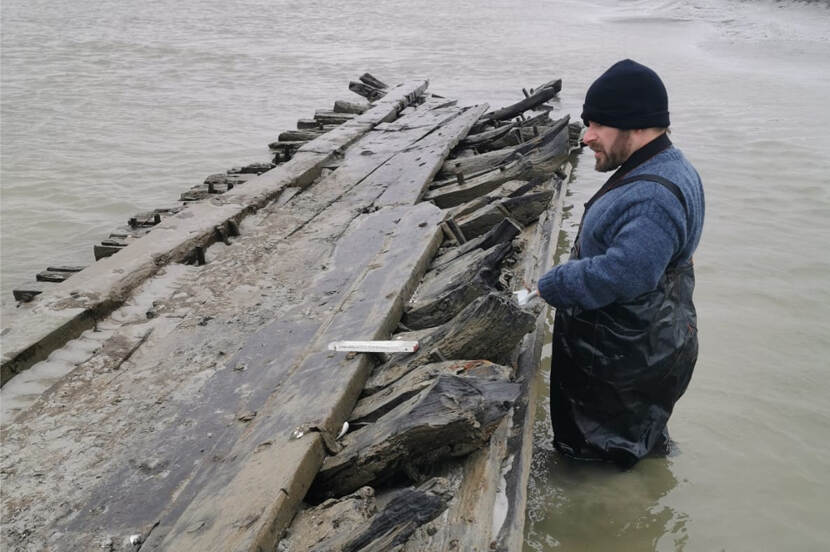Germany
Multiple shipwrecks have been found within the German sea. Below are three key projects that the Cultural Heritage Agency of the Netherlands (Rijksdienst voor het Cultureel Erfgoed | RCE) is working on together with partners in Germany.
Shipwrecks in the German Wadden Sea
There are many Dutch shipwrecks in the German Wadden Sea. This is not surprising, as the area is historically closely linked to the Netherlands. For centuries, Dutch ships sailed around the German Wadden Islands. In 2016 and 2020, two shipwrecks from the 17th and 18th centuries were found in the area that – given their construction details – are very similar to what experts call North Holland shipbuilding. The State Archaeology Service of Schleswig-Holstein investigated them. Together with a number of wrecks found in the Netherlands, these wrecks will be part of a follow-up study into the use of a double hull in the construction of merchant ships from the late 16th and throughout the 17th and 18th centuries. In this study, Dutch and German ship archaeologists will cooperate and the RCE will participate.
For more information on the study, see: Zwick, D., 2021: The latest double planking. Shipwrecks in the German Wadden Sea, Journal Cultural Heritage Agency of the Netherlands, 4-2021.

Hörnum-Odde wreck
The first of the two wrecks mentioned in Section 3.6.1 washed free at Hörnum-Odde, the southern tip of the island of Sylt, in October 2016. Due to erosion and winter storms, the wreck kept falling apart and unfortunately could not be saved. However, some important details were documented just in time. The slender frames were not connected to each other, but only attached to the planking. These planks were huge in size and contained small wooden plugs known as nail pins. Nail pins were mainly used in shipbuilding where the exterior was assembled first. This way of building prevailed in the Netherlands especially in the 17th century. In addition, the hull had a double layer of oak planking, often referred to as Double Dutch. This feature was also seen on a number of ships of the Dutch East India Company, for example the Batavia (built in 1628) and the Mauritius (built in 1612). We also see this double skin on the Admiralty ship Utrecht (built in 1633) and the wreck of the Scheurrak SO1, a grain carrier from the late 16th century. The ship found near Hörnum-Odde is estimated to have been built around 1690. The role of the double hull in Dutch shipbuilding has been the subject of considerable debate in academic circles in recent years following these finds and the concluding investigation of the Scheurrak SO1 wreck. The programme has facilitated this debate (and the RCE will continue to do so) by bringing people together and funding additional research on wrecks like this one.
Local chronicles report that a Dutch West India Company ship with a valuable cargo ran aground near Hörnum in a storm on 13 December 1703. A historical survey will be carried out in 2022 to see if this could indeed be the Hörnum-Odde wreck. The outcome is expected by the end of that year.
See MaSS for more information on the Hörnum Odde wreck.
Süderoogsand
In 2020, an 18th-century wreck was discovered in a tidal creek on the sandbank Süderoogsand. This has exactly the same structural peculiarities as the wrecks described above. Close to the wreck were a clay pipe and a sherd of Delftware. The oak was dated to around 1733, so this ship was even younger.
- See MaSS for more information on the Süderoogsand wreck.

